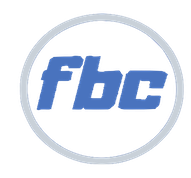
DOT Requirements
The Department of Transportation‘s (DOT) requirements for diesel fuel tanks fall under three parts: Part 393.67, Part 571.301 and Part 393.65. These requirements fall under the authority of the Federal Motor Carrier Safety Administration, a division of the DOT and cover the requirements for diesel fuel tank construction, mounting, testing and marking.
Commercial Vehicles
Part 393.67 of the FMCSA regulations cover the standards for all fuel tanks, including diesel and auxiliary tanks, on commercial vehicles. Fuel tanks and parts must conform to certain construction standards for joints, fittings, pipes, drains, overfill protection, venting and all other parts. Diesel fuel tanks on commercial vehicles must also be tested for leaks and proper venting. Side-mounted tanks must undergo additional testing to see that the tanks do not leak upon impact. Additionally, all commercial vehicle diesel tanks must be properly marked with the manufacturer’s name and location; the date of manufacture; and a certificate stating that the tank conforms to the FMCSA standards.
Non-commercial Vehicles
Diesel fuel tanks on non-commercial vehicles weighing 10,000 pounds or less must follow the FMCSA standards for fuel system integrity outlined in Part 571.301. School buses also are covered under this standard. All fuel systems in these vehicles must meet the requirements to resist leakage or spillage during front-impact crashes, rollovers, rear-end collisions and side-impact crashes. This regulation specifies how much fuel may spill from the tank during each type of impact and how to perform the tests on the tanks.
All Vehicles
Fuel systems for all vehicles must follow Part 393.65 of the FMCSA regulations. These general requirements mandate that the fuel tank be mounted in a safe location behind the front axle without extending out from the vehicle, where spilled fuel will be kept away from the exhaust, and with fill pipes on the outside of the vehicle. This part also requires that the fuel lines be installed where they will not interfere with towing, away from the passenger compartment on buses, and in a protected and secured area. Finally, tank selection switches must be located where the driver can operate while still keeping sight of the road or in a place where the driver must leave his seat.







